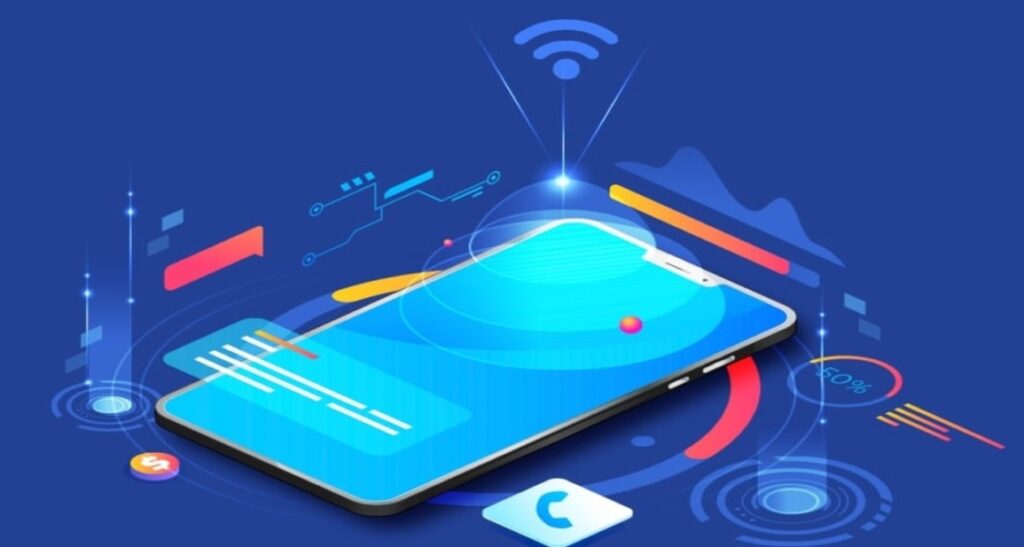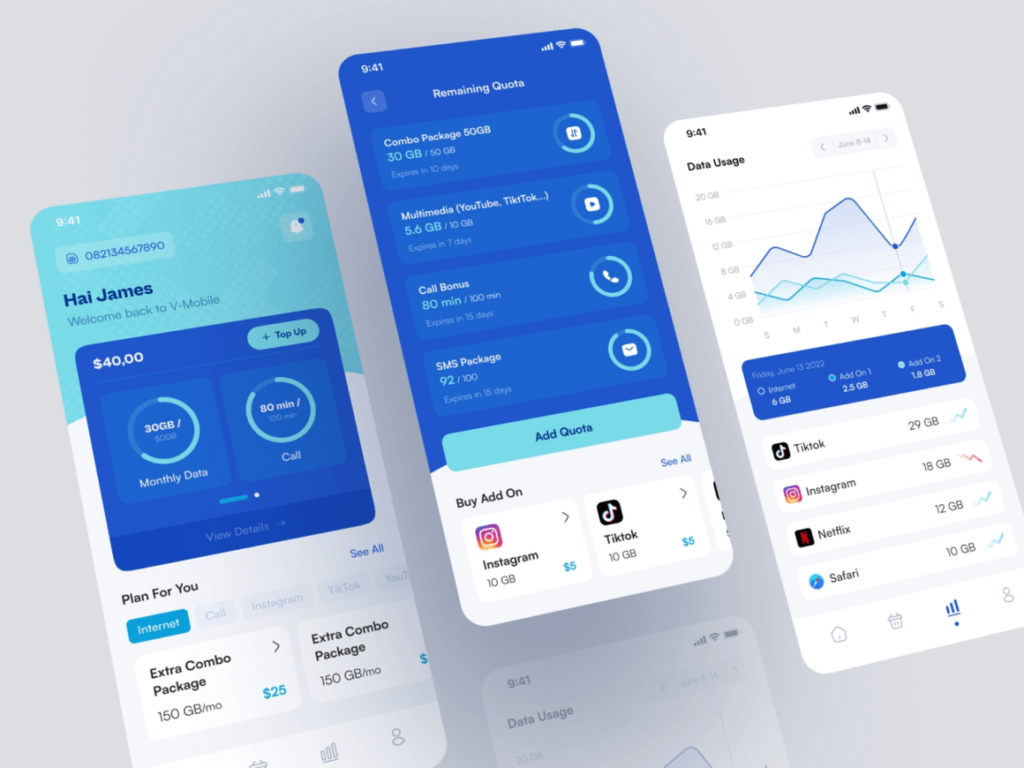What is mobile app design and how does it enhance user experience?
Mobile app design is the process of creating user interfaces and user experiences within a mobile app. Includes understanding user needs and preferences, designing an easy-to-use interface, and developing an application that meets user expectations. Designers should also consider how to translate their design into different platforms, such as iOS and Android.
Designing a mobile app with the user experience in mind is essential to ensure users have a great experience when using the app. Good design of mobile apps enhances usability, increases engagement and increases customer satisfaction. It also helps developers create more successful apps by enabling them to better understand their target audience.
Mobile App Interface Design Tips
- Do the necessary research and work within a well-thought-out strategy
The first step to ensuring your design is better than the rest is to do some serious research. Search the app marketplace for other apps related to your app and take notes. Here are some factors that help you in this regard: Who is your target audience and what are the top trends? They have a turnout of applications related to this application? How big is the competition in this market specifically for applications? Who are the main competitors?
- How do applications look similar or related to the application in question?
- What are the advantages in the way existing applications work?
- What are the weaknesses of existing applications and what can you improve?
- What kind of thing would stop you from using this app regularly?
Finally, make sure you know who the target user you are designing the app for? The user will have a significant impact on the look and function of the final design of this application.
- Do it better
The next step is to work on doing things really better than your competition, and here we are not talking about visually beautiful designs that make the same problems more likely in a different way, we mean going back to the drawing board and designing an interface that works better or does the same job in a way Easier, faster or more fun.
- The design should revolve around the end goal of the user
Each application must be designed around the goals of the user to use it, and not resort to designing an application in some way just because this design is absolutely wonderful but does not serve the ultimate goal of the application that the user seeks after, and this means that before you start choosing a design that fits with the goals of the target group, it must First of all, understanding what the ultimate goals are for the user. Clarifying the goals and making them specific makes them exceptionally easy to achieve. The design should serve the steps and sequence in an easy and intuitive way that motivates the user to follow the steps needed to reach the endpoint without getting frustrated or distracted in between.
- Understand your ideal user persona
Designing successful smartphone applications revolves around having an understanding of the people targeted by these applications, and this means that the design process must be preceded by a strategy based on research and accurate data about that target group in terms of age, social, religious or cultural issues that may prevent the user from obtaining Get the most out of your application, for example, if you are building a game for a young user in which case you don’t have to worry about spelling out the steps to get started or including small text in important areas, if you are building an application for an older user, then both The two people in this case are fine. Consider your user in every aspect of your mobile app design.
- Maintain a clear interface to avoid user confusion
In order to design mobile applications that are easy to use, it is necessary to keep the interface clear and simple, do not add anything to your application that does not improve the user experience but rather complicates it and creates a negative impression of the application, keep the layout of your mobile design as simple as possible while maintaining on the desired visual effect.
- Color consistency and use of a color hierarchy
Using shades of the same color can help you create the hierarchy needed to intuitively move the user along their path to achieving their goal, and not make them feel that the colors are annoying or off-putting, for example, starting with a strong dark green and moving down the screen or page by page with a shadow A green that is lighter in tone or intensity will help indicate progress in the right direction by the user towards their goal of getting to what they want within the app, and also makes it easier to identify the most popular options the user has or the action you want them to take the most .
- User actions need to respond quickly / responsively
The digital day is very fast, so one of the important factors underlying the design of smartphone applications is the assumption that users usually have limited time, little patience and a limited period of interest. This means they need almost instant gratification for every action taken within your app through quick response that may be more difficult to do with the most complex tasks But something as simple as vibration when the button is pressed and the download bar or code will help them understand that your app is doing its best to move it through to the next step as quickly as possible, Consider adding a fun truth about your waiting screen to keep them busy The more fun your app has, the more likely it is to be shared, and the most important thing to remember here is to try to avoid the rotating loop that refers to the loading that does not determine the amount of progress to the next step, It just makes them worried about staying or leaving!
How to keep your mobile app design simple
Creating a mobile app that is simple and easy to use is essential for user engagement and retention. The simple design helps the user quickly understand the purpose of the application, without having to spend a lot of time learning how to use it. The easy-to-navigate interfaces also ensure that users can access the features they need with minimal effort.
When designing a mobile app, it is important to consider how users interact with their devices. This includes understanding the gestures used for navigation, the buttons used for certain tasks, and which items should be visible at all times. Keeping these principles in mind when creating an interface will help create an application that is simple and intuitive to users.
To communicate with the first company in Kuwait to design programs and smart phone applications
96522215111+
info@sourcemediakw.com
Follow us on Instagram
Follow us on Twitter


